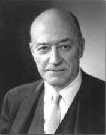The Free Market Center
The Free Market Center
Introduction to
simple Economic System Models
Economists fall into two extreme camps regarding the use of economic models. Some economists, at one extreme, absolutely eschew the use of mathematical models of any sort. The "mathematical" economists, who fall at the other extreme, believe they can build models that actually replicate the behavior of markets.
The first group has a very compelling argument. The complexity of some systems—like economies—simply defy the creation of meaningful mathematical models. Most attempts to model the behavior of economic systems include so many logical inconsistencies that their results range from laughable to dangerous (depending on their use.)
But, avoiding models altogether ignores some powerful descriptive tools that can help people overcome their inability to project systemic behavior over time.
Do we have a tool that can accurately model the behavior of an economic system?
No, and yes.
No, the incredible complexity, coupled with the adaptive—i.e. learning—nature of economic systems, makes them absolutely impossible to model as a whole.
Yet, describing the principles and theories that apply to economic systems requires abstract mental constructs—Ludwig von Mises referred frequently to the "evenly rotating" economy, a mental construct.
Yes, System Dynamics—a systems modeling process—offers a way to depict economic behavior in a mental construct that holds certain variables constant. If used judiciously, System Dynamics can provide a valuable tool to describe the interconnections in systems and the behaviors that those interconnections will cause over an extended period of time.
Next tab (above)...
Within limits, which I describe in this presentation, I have constructed several variations of a simple stock and flow model that depict four fundamental principles regarding the behavior of economic systems:
As a mental construct, I have created three sets of models of a simple economy. These sets individually show:
Because of the connection of these sets I have included a consolidated summary and conclusion for the three sets.
Next tab (above)...
I need to make it clear from the outset that building models can neither prove economic theory nor can they represent real economic systems. Because of the extreme complexity of even the smallest economic system, only the system itself can act as an accurate model of the system. In addition, that complexity precludes proving cause and effect relationships in economic theory. Those relationships can only be established through sound economic reasoning.
Good modeling, on the other hand, can provide demonstrations of the economic theories, i.e. someone building a model must work from theory to the model, not the other way around.
The following summarizes the segments of this presentation of a model simple economic system:
Again, I suggest you view these models in sequence.

Henry Hazlitt -
A rare economic journalist
who understood economics.
The art of economics consists in looking not merely at the immediate but at the longer effects of any act or policy; it consists in tracing the consequences of that policy not merely for one group but for all groups.
Henry Hazlitt
Economics in One Lesson
© 2010—2024 The Free Market Center
& James B. Berger. All rights reserved.
To contact Jim Berger, e-mail:
© 2010—2020 The Free Market Center & James B. Berger. All rights reserved.
To contact Jim Berger, e-mail: